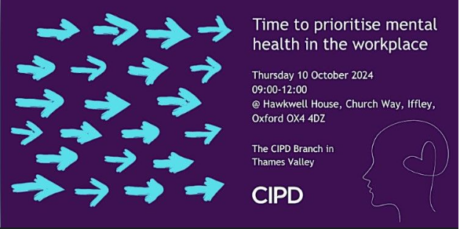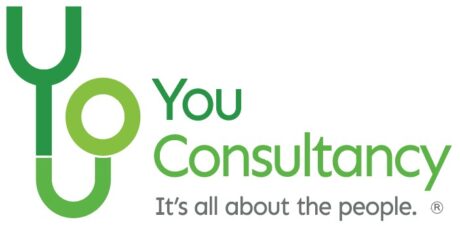
Can your business afford conflict in the office?
Will companies face an increase in conflict and disputes now employees are facing a return to the workplace post-COVID-19? What is the cost of conflict in the workplace and can we really afford it?
As the world starts to return to normal and organisations are starting to implement a return to the office, workplace conflict is on the rise. What are the issues for your people and how can these be positively addressed?
Conflict is defined as a clash of interests. Examples of conflict in the workplace include:
- any form of bullying behaviour or harassment
- any form of discriminatory behaviour
- poor performance
- poor attendance and timekeeping
Other issues that can also be defined as conflict include:
- differences in personality style or working
- taking credit for other people’s ideas or work
- not valuing other people’s viewpoints
- talking over someone else
- Excluding someone in an all-group email or meeting
- Ignoring someone intentionally
- Poor personal hygiene.
What can cause conflict?
Conflict can occur due to many differing factors. Some of these include:
- Personality and behaviour differences
- Unmet needs in the workplace
- Perceived inequities of resources
- Unclarified roles in the workplace and unknown expectations
- Competing job duties or poor implementation of a job description
- A systemic circumstance such as a restructure or change of work flow or process
- Mismanagement of organisational change
- Poor communication
- Differences over techniques and working styles
- Differences in perspectives
Why might we see more conflict upon a return to the workplace?
There are various reasons that there may be a rise in conflict upon returning to the workplace. Where conflicts may have risen at the start of the pandemic, due to increased levels of stress and poorer levels of communication, levels of conflict are on the rise again. This change of working environment brings along a whole new plethora of mixed emotions as the ‘new’ normal starts to shift back to the way things were before the COVID-19 pandemic.
For some, this return to the office is a welcome one and something that a lot of people have been longing for. However, for others, it is an event that they have been dreading as the home working set-up has suited them better as well as their productivity.
Reasons for this rise in conflict could include:
| Attitudinal Changes | Some employees may be feeling disengaged and have a negative attitude about their role due to the sometimes isolating nature of working from home long term. |
| Interpersonal Changes | As employees begin to catch up with colleagues, those interpersonal conflicts that were there before the pandemic may be rekindled upon a return to the workplace as well as new interpersonal conflicts that may have arisen during remote working. |
| Poor Communication Skills | From an extended period of remote working and lack of social interaction. |
| Lack of understanding | Perhaps colleagues who previously worked together closely have become distant, or managers have not been able to provide the same regular communication that was once received. |
The effects of conflict on the workplace
Absenteeism – the practice of regularly staying away from work without good reason.
Presenteeism – the practice of being present at one’s place of work for more hours than is required
Negative workplace environment – those experiencing conflict can negatively impact the workplace environment and culture
Increased tension across the whole team
Increased employee relations issues
Lower levels of retention – conflict is the starting point of grievances and disciplinarians, as well as a main reason that employees decide to leave an organisation
Litigation – more conflict results in more chnag=ces of litigation
Steps to dealing with conflict informally
The first step in solving conflict within the workplace is to deal with it informally. This can be done through the following steps:
- Conversations with those involved – Ensure that this conversation is in comfortable and private setting, and allow flexibility around this
- Listen to both perspectives – It is vital to ensure that all sides have an opportunity to share their perspective to allow a greater understanding of the issue
- Establish expectations – Make sure that expectations are communicated clearly so all parties involved are aware of what their conduct and capability should look like within their roles and the organisation
- Support collaboration – Ensure that you are positively supporting collaboration and providing the resources needed to do so
- Compromise – Just as you have listened to both perspectives, ensure that a compromise can be reached to settle the conflict and ensure that a fair process has been carried out
- Review – Set a time, date and place for another informal conversation to see if the conflict is still there after clear expectations, collaboration and compromise has been mapped out. If the conflict is still there, formal action may need to be taken.
Role of the Manager
Line managers have the biggest influence on an employee’s attitude and experience within their role through how they (or in some cases, how they don’t) embed positive behaviours, environment and culture for their team.
The manager should strive to ensure that they are:
- Being open, fair and consistent
- Handling people management issues including conflict
- Providing clarity, knowledge, and guidance
- Building and maintaining relationships
- Supporting development needs
They can achieve this through:
- Understanding and building good working relationships with their team
- Anticipate and put in preventative measures for potential conflict
- Be understanding of any personal pressures that are affecting them within work
- Provide open and honest communication
- Listen and action their ideas
- Allow opportunities for their team to meet their development needs
Role of HR
Employees will have received a copy of your organisation’s values and vision as well as copies of the employee handbook or policies on conduct and capability at work. This allows an employee to be aware of the expectations of how they conduct themselves in the workplace and their own personal accountability in supporting a positive working environment. HR provides a pivotal role to positively support employers and employees in the deployment of policies and processes through ensuring they are consistently embedded throughout the organisation to maintain positive relationships within the workplace.
How to build strong employee relations
- Providing feedback is so important, it allows employees to be fully aware of what they do well and what they can build upon. Having this dialogue with an individual is a great tool in building good employee relations.
- Communication is key in any relationship, particularly when working remotely. Communication should always be open, honest, fair and transparent.
- Be clear on expectations by providing an up-to-date job description, clear development objectives.
- Career development. Ensure that any relevant roles that go out for recruitment are offered up internally. Provide clear performance objectives and professional development opportunities, such as providing financial support to undertake qualifications, to ensure employees know that you are actively supporting their career progression.
- Providing training allows employees to be confident in their abilities to do their job and develop themselves professionally.
Expenses to consider
Conflict is a very expensive issue for an organisation to have. The Estimating the costs of workplace conflict report from Professor Richard Saundry and Professor Peter Urwin details just how true this statement is. On average it costs an organisation £31,103.46 when a conflict is unseen, an employee does not raise the issue and they leave the organisation. When a conflict issue is raised by an employee, but poorly handled by their manager, it costs the organisation on average £8,775.32 due to a formal grievance and the employee potentially taking time off work due to stress, anxiety and depression.
When an individual raises a conflict issue with their manager, this issue is mediated and it comes to a successful resolution, the total cost on average is £1917.96.
This is why it is crucial to ensure you have a fair, robust and effective process in place with all individuals trained in how to manage conflict to ensure that resolution is sought at the earliest opportunity to the benefit of all involved.
| HR Issue | Neither Informal or resolution nor formal procedure | Informal Resolution | Disciplinary/Grievance Procedure |
| Presenteeism | 44% | 50% | 49% |
| Absence | 5% | 12% | 21% |
| Resignation | 7% | 4% | 7% |
| Discussion- Manager | – | 79% | 40% |
| Discussion – HR | – | 27% | 35% |
| Discussion – Union | – | 13% | 26% |
| Mediation | – | – | 15% |
| Disciplinary / Grievance procedure | – | – | 100% |
| Dismissal | – | – | 5% |
| Legal Dispute | – | 2% | 7% |
| Average cost per person | £2,324 | £1,941 | £6,405 |
Source: Analysis for ACAS by Professor Richard Saundry of the University of Sheffield Management School and Professor Peter Urwin of the Centre for Employment Research, University of Westminster
Employment relationships and resolving conflicts in the workplace
One of the best ways of ensuring that your organisation can effectively manage conflict resolution is through the training and enabling of managers to have the right skills and confidence to meet their particular role requirements.
Our training programmes have been designed to focus on the development areas of people management and leadership. In our experience, we often find that managers are ‘born’ into roles often with little or no support to upskill and become capable people managers and/or progress into people leaders. Running a trial-and-error way for managers to learn is a risky strategy for any business and is also an inefficient way for businesses to operate, as such a strategy is time and resource-draining and becomes a costly exercise. Our programmes increase knowledge, understanding and experience of people management at all supervisory, management and leadership levels and develop a culture of learning and development for personal growth.
We have created a people management and a people leadership programme that complement each other and have been accredited through The Institute of Leadership and Management (TILM) to develop the skills for managing self and others, built on a platform of personal resilience (and mechanisms such as handling positive and negative feedback, managing conflict to reach resolution).
More in HR

Time to Prioritise Mental Health in the Workplace: World Mental Health...
In case you haven’t seen Jonna Mundy, CEO of You Consultancy Ltd. is hosting a CIPD event not to be missed! Whether you are an HR professional or specialise / have an interest in Health and Wellbeing, why don’t you join Jonna and a fabulous line-up of guests at the Mercure Oxford Hawkwell House Hotel. […]

Unlocking Excellence
In the ever-evolving realm of human resources and organisational development, leaders consistently grapple with pivotal decisions in shaping their core people functions. Traditionally, many have opted for in-house resources to bolster internal teams for managing people matters. However, in the face of contemporary employment challenges and evolving expectations, leaders are increasingly turning to a more […]

Navigating HR & OD Challenges in 2024: A Guide to a...
Introduction: As we step into the New Year, the ever-evolving landscape of human resources (HR) and organisational development (OD) presents both exciting opportunities and unique challenges for HR Professionals, Leaders, and Managers. From adapting to accommodate ongoing workforce needs or addressing emerging trends, January 2024 sets the stage for those responsible to proactively shape the […]
From this author

Time to Prioritise Mental Health in the Workplace: World Mental Health...
In case you haven’t seen Jonna Mundy, CEO of You Consultancy Ltd. is hosting a CIPD event not to be missed! Whether you are an HR professional or specialise / have an interest in Health and Wellbeing, why don’t you join Jonna and a fabulous line-up of guests at the Mercure Oxford Hawkwell House Hotel. […]

Unlocking Excellence
In the ever-evolving realm of human resources and organisational development, leaders consistently grapple with pivotal decisions in shaping their core people functions. Traditionally, many have opted for in-house resources to bolster internal teams for managing people matters. However, in the face of contemporary employment challenges and evolving expectations, leaders are increasingly turning to a more […]

Navigating HR & OD Challenges in 2024: A Guide to a...
Introduction: As we step into the New Year, the ever-evolving landscape of human resources (HR) and organisational development (OD) presents both exciting opportunities and unique challenges for HR Professionals, Leaders, and Managers. From adapting to accommodate ongoing workforce needs or addressing emerging trends, January 2024 sets the stage for those responsible to proactively shape the […]

